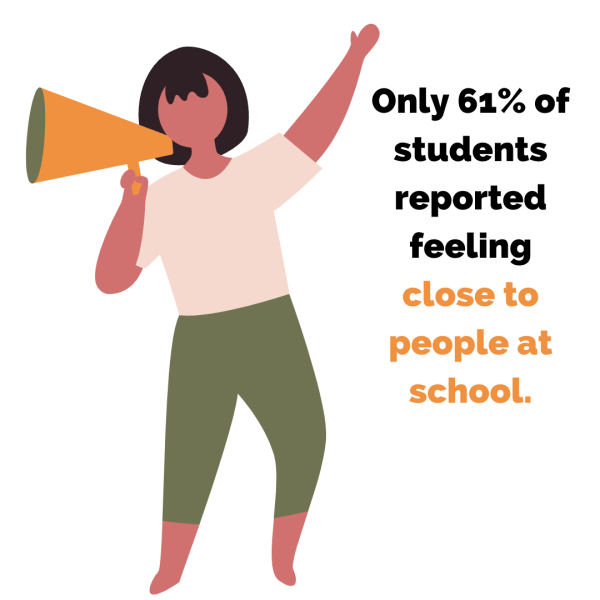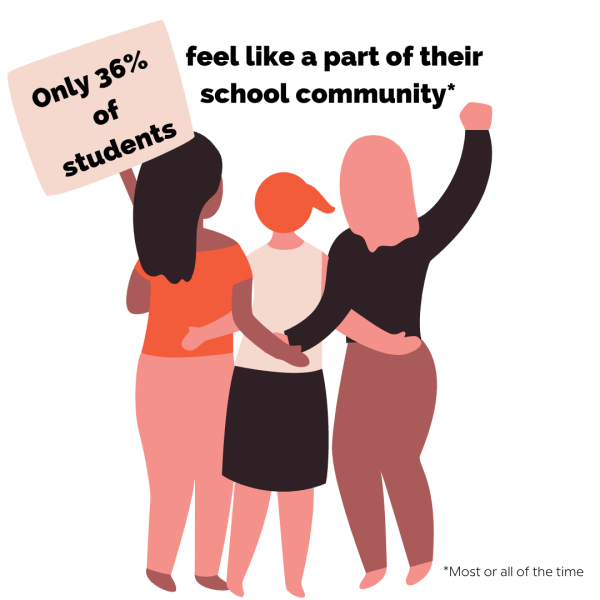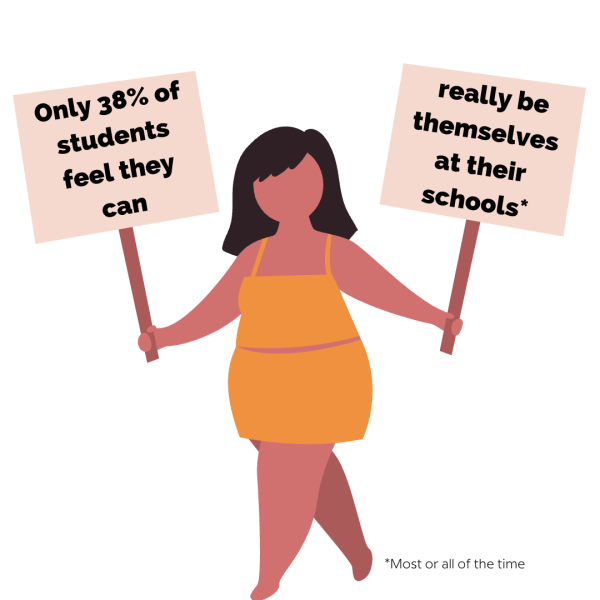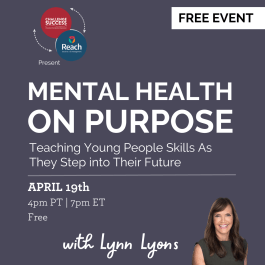School Connectedness Is a Protective Factor for Youth Mental Health
In its recent Youth Risk Behavior Survey Data Summary and Trends Report, the CDC recognized that improving youth mental health requires an understanding of young people’s environments and how these environments affect their behaviors and experiences. As a result, their latest survey includes a question about “school connectedness,” which is the feeling among students that people at their school care about them, their well-being, and success.
While the research shows that school connectedness has long-lasting protective effects for adolescents, only 61% of students in the CDC survey feel close to people at school. In the Challenge Success Student Survey, we look at belonging and connection in school through a variety of dimensions. We have found that:
- only 69% have an adult at school they can go to with a personal problem
- only 38% feel they can really be themselves at their schools most or all of the time
- only 36% feel like a part of the school community most or all of the time
Understanding the Link Between Learning and Belonging
We have known for years that social, emotional, and cognitive processing are all neurologically intertwined. When students of all ages and stages feel they belong to a community, they are more likely to thrive — and students don’t learn as much when they feel uncertain about their belonging.
When we combine our findings from our survey questions around engagement with the belonging questions, we find that students who are fully engaged are also more likely to feel a strong sense of belonging in school. This association between belonging and engagement is bidirectional, meaning that students’ sense of belonging in school is also significantly positively correlated with feeling engaged in their schoolwork.
These kinds of findings are a powerful tool in helping you to understand how students in your school are actually doing, but once you gather the data, how you choose to use it is what really makes a difference.
Below, we have included three of our top strategies to improve connection in schools. And, if you are interested in learning how students in your school are doing, we can help. Together we will go beyond merely collecting the data. Our expert research team offers deep analysis of your results and works with you to co-develop a customized plan to focus your efforts on the students who are struggling the most to improve their well-being, engagement, and belonging right away.




Three Ways to Nurture Connection in Your School & Improve Youth Mental Health
- Solicit Student Voice: Empower students to build advocacy skills so that they learn how to ask for what they need. Provide communications channels for students to share their ideas with adults at school, such as a comment box, student advisory group, or focus group. Do you want to find out how students in your school are doing? Work with us to gather real data about students in your school and partner with our expert research and program teams to analyze your results and take steps to improve well-being, engagement, and belonging. Learn more here.
- Leverage Your Schedule: How time is allocated during the school day reflects what is important to the community, intentionally or unintentionally. The organization of time in the school schedule can facilitate or impede connections between and among the school staff and students. Learn more about our take on school schedules and well-being here, or contact us to be part of a select group of schools working on schedule change in our 2023-2024 School Program.
- Make Learning Meaningful: The adolescent years are the peak of our identity development as human beings. Since teens are inherently curious about who they are, we can leverage this focus by creating ways for them to explore their identity through the curriculum. When teachers intentionally design lessons that are meaningful to their students, build an authentic climate of respect into their classrooms, and listen closely to students and incorporate their input, students’ sense of belonging and academic engagement are more likely to be high. Read more about the connection between belonging and engagement here and check out some strategies for peer-to-peer connection building here.
Upcoming Events to Support Youth Mental Health


- The Institute for Social Emotional Learning (IFSEL) is hosting a free TeachMeet on April 4th all about School Belonging as a Protective Factor. Their TeachMeets offer a simple structure to share resources and connect with people around the world who “get it”.
- Join us on May 10th for our flagship workshop, The Well-Balanced Student, which offers schools and families research and strategies that encourage a more balanced student experience, including topics like homework, sleep, cheating, and more. If you have or work with children younger than third grade, join us May 24th for The Well-Balanced Child instead, where we share strategies for healthy PK-2nd grade child development.
If the cost of attending an event is a barrier for you or students you work with, please reach out about our financial assistance.
A: After seeing the data, I felt it was even more important to have well-being, engagement, and belonging…Frosh year I was really scared coming in, because I went to public MS and was not the minority race, coming into HS where I was minority race, that was really scary for me. That’s why I cofounded Asian Cultural Alliance – so students like me could find people going through the same experience.
Q: How has the Challenge Success survey data expanded your awareness around well-being, engagement, and belonging?
-Emma, Student Advisory Committee Member
